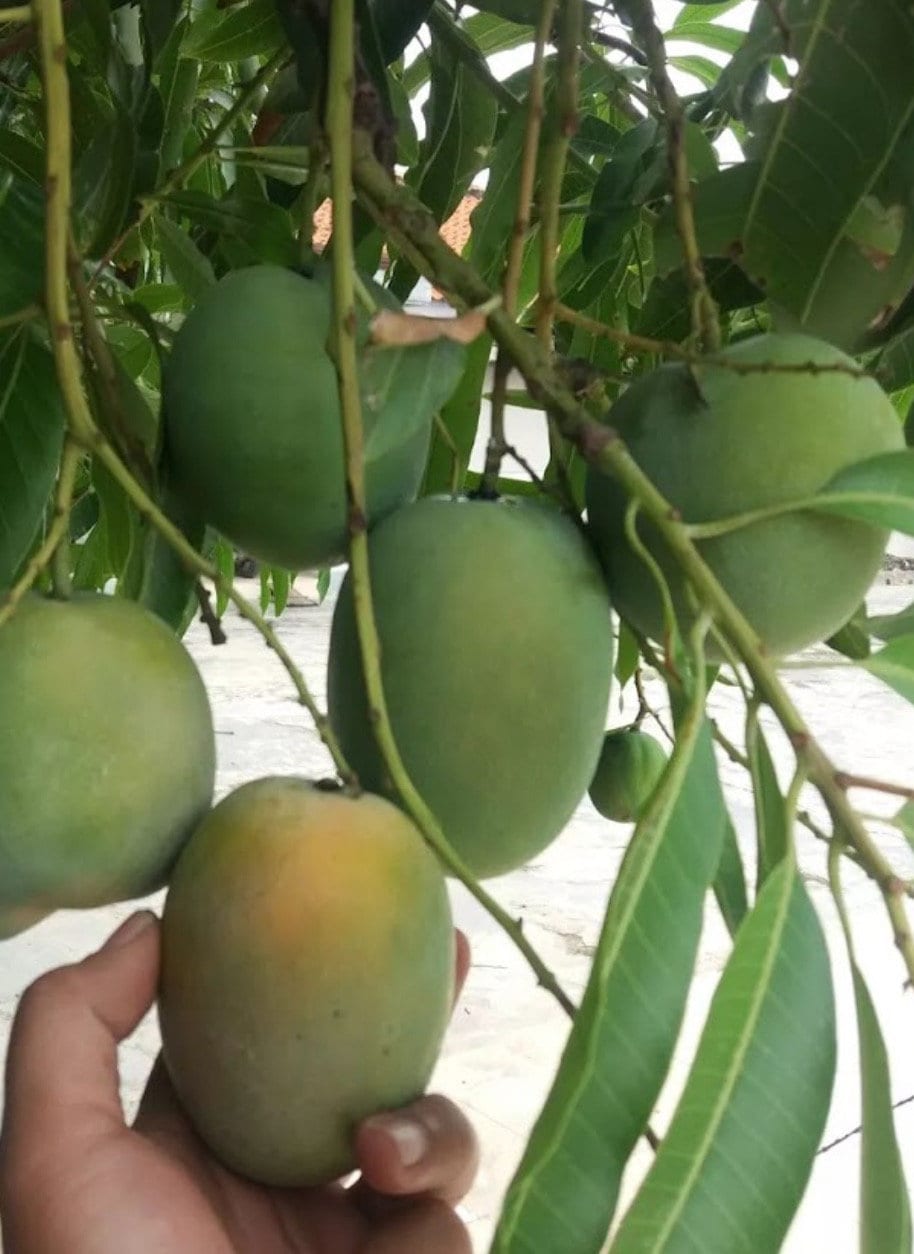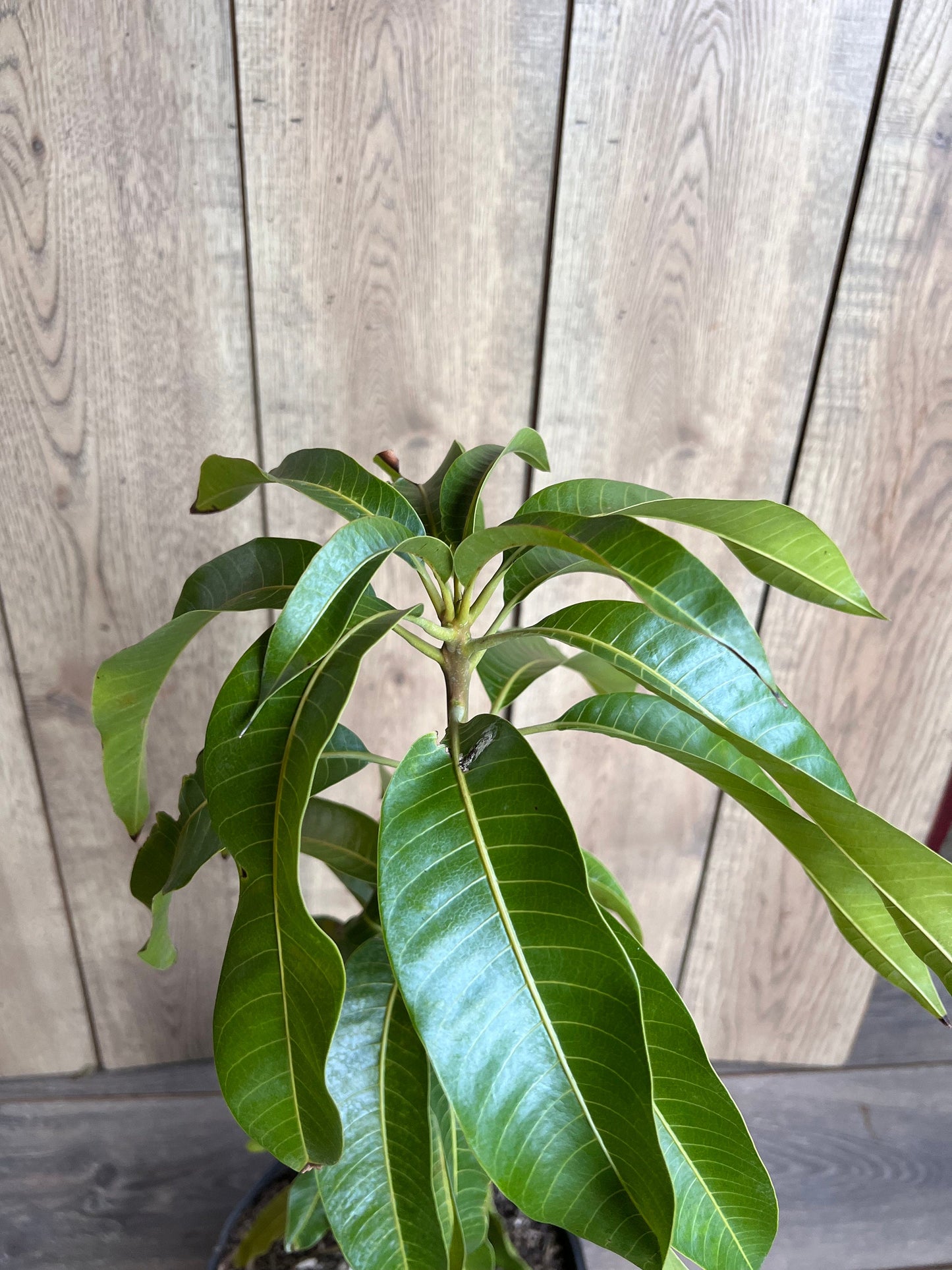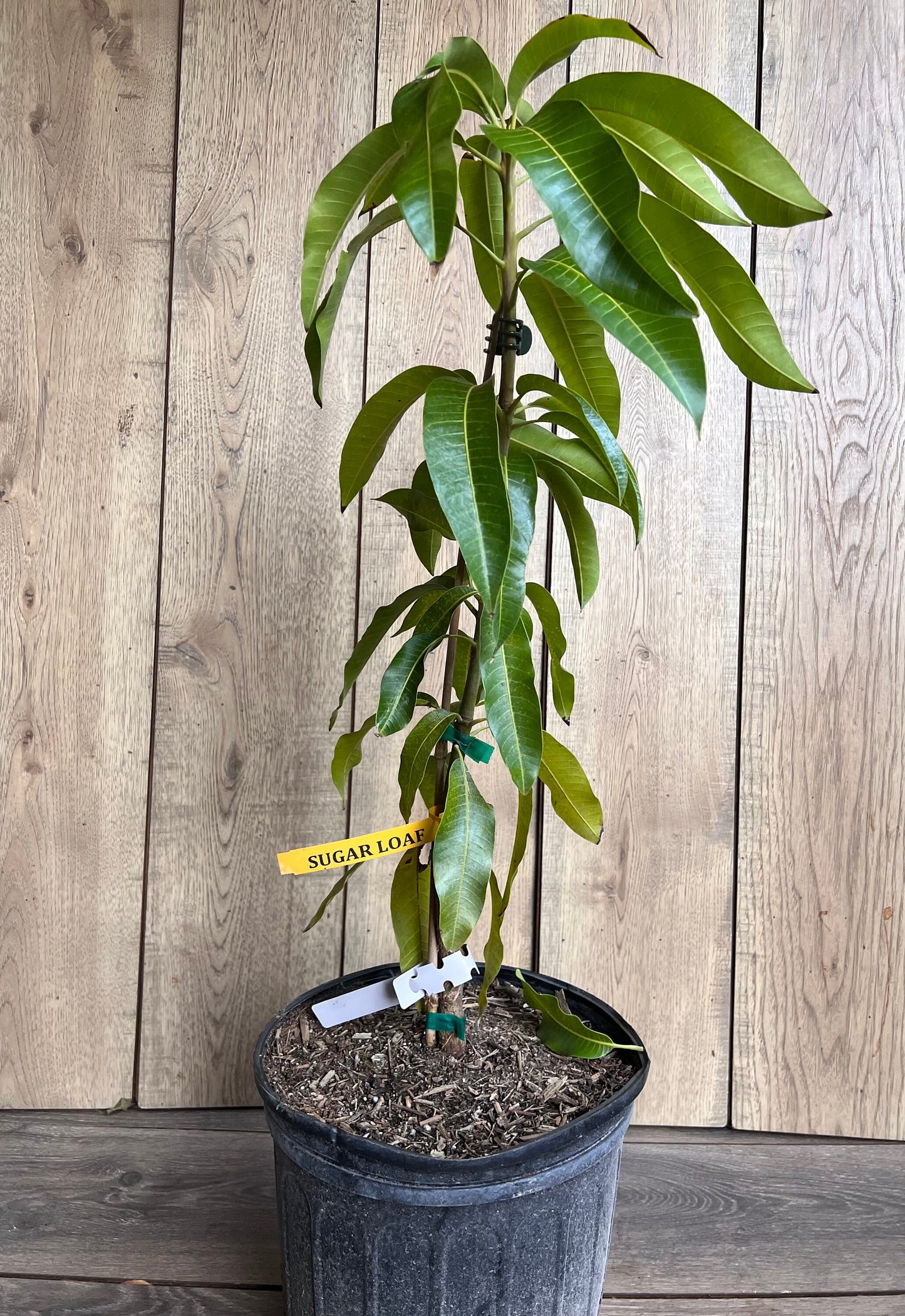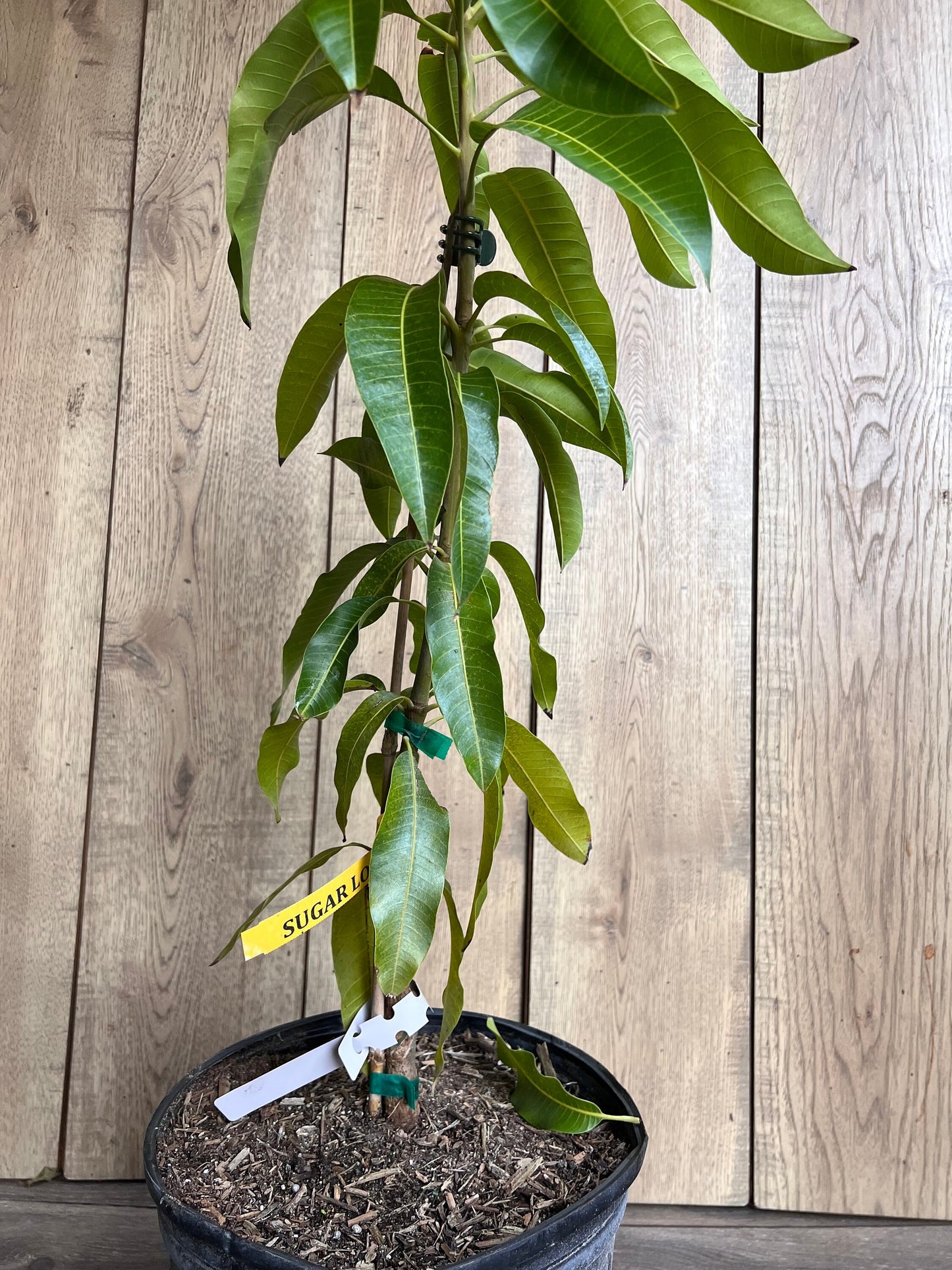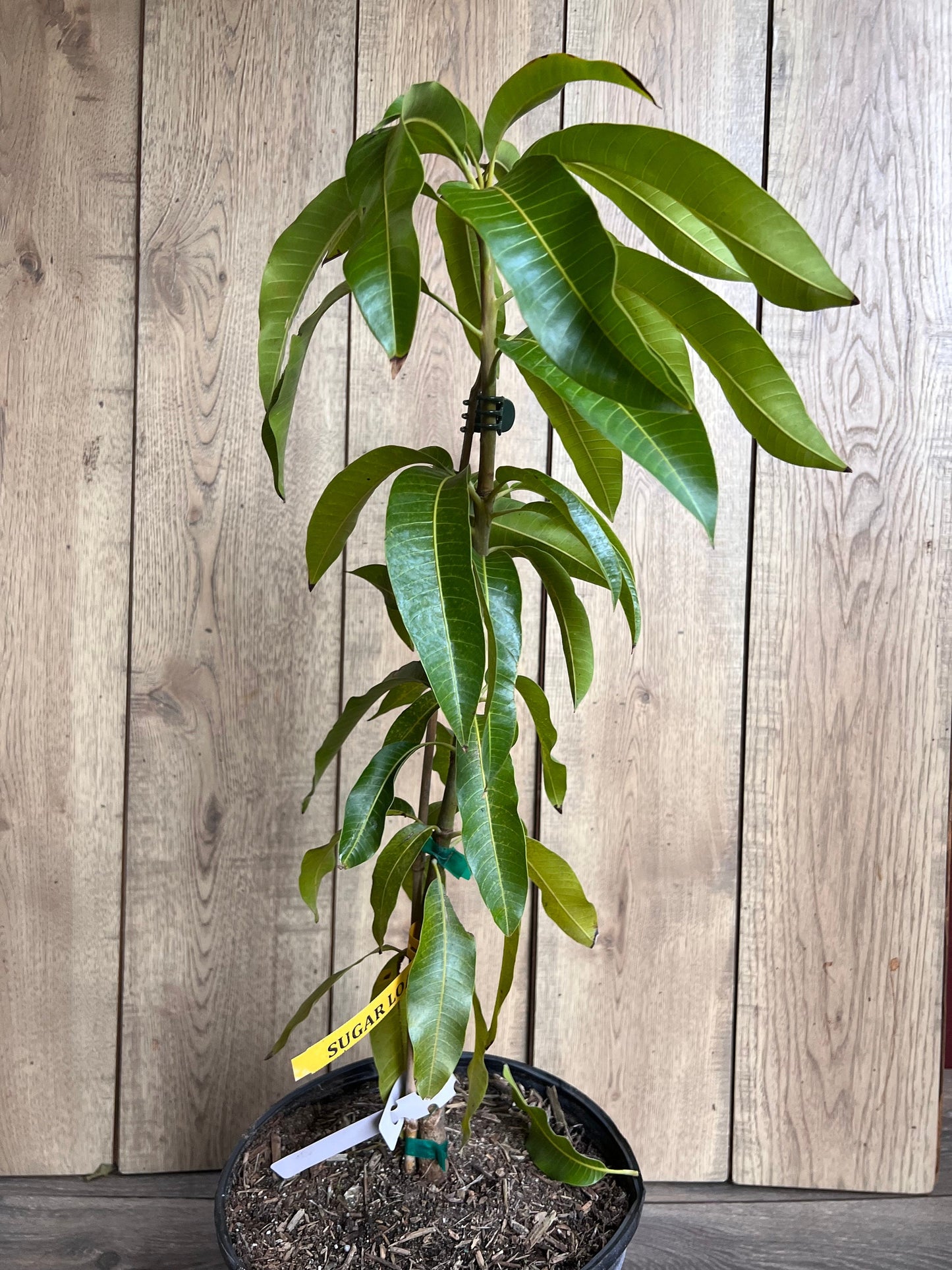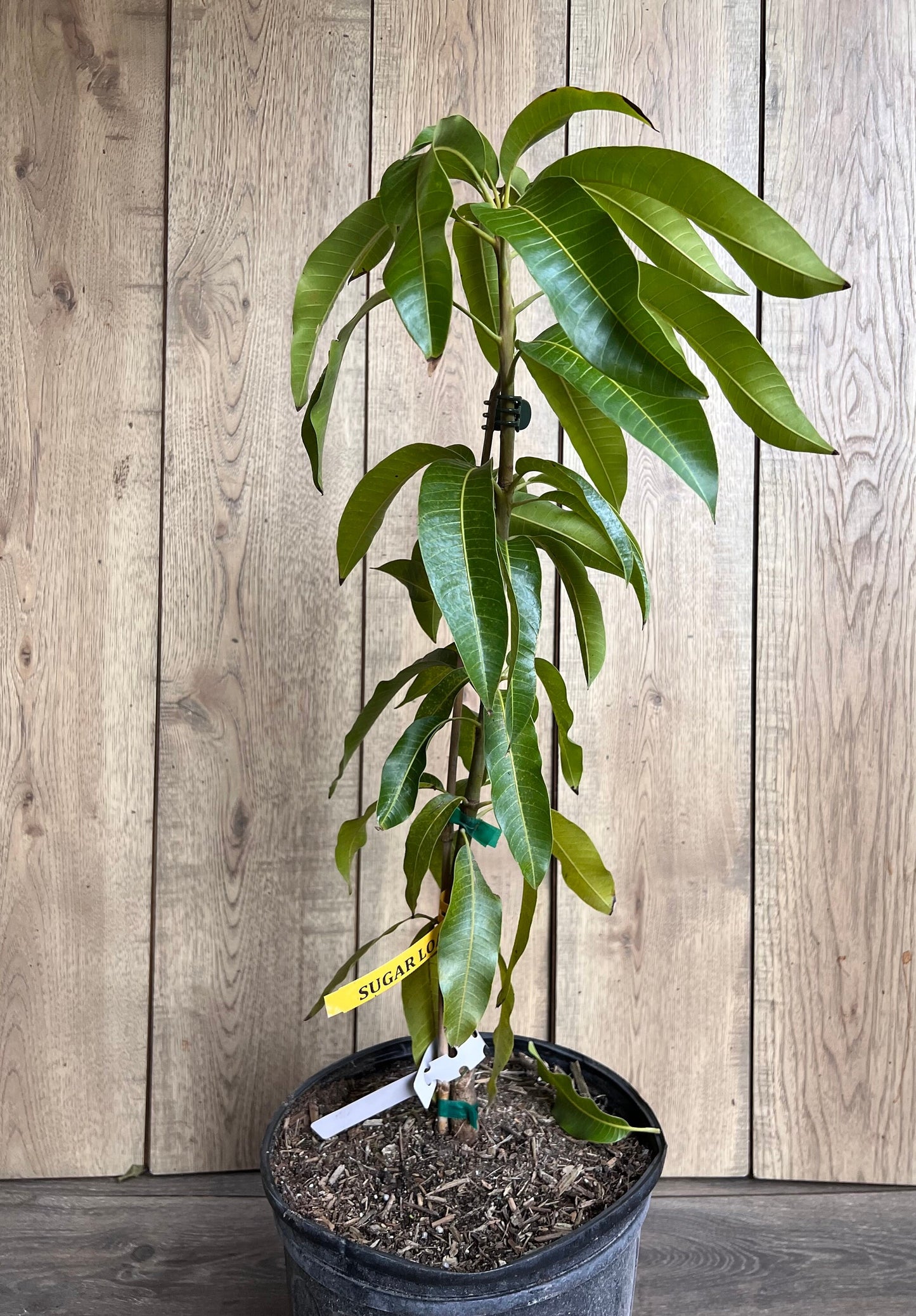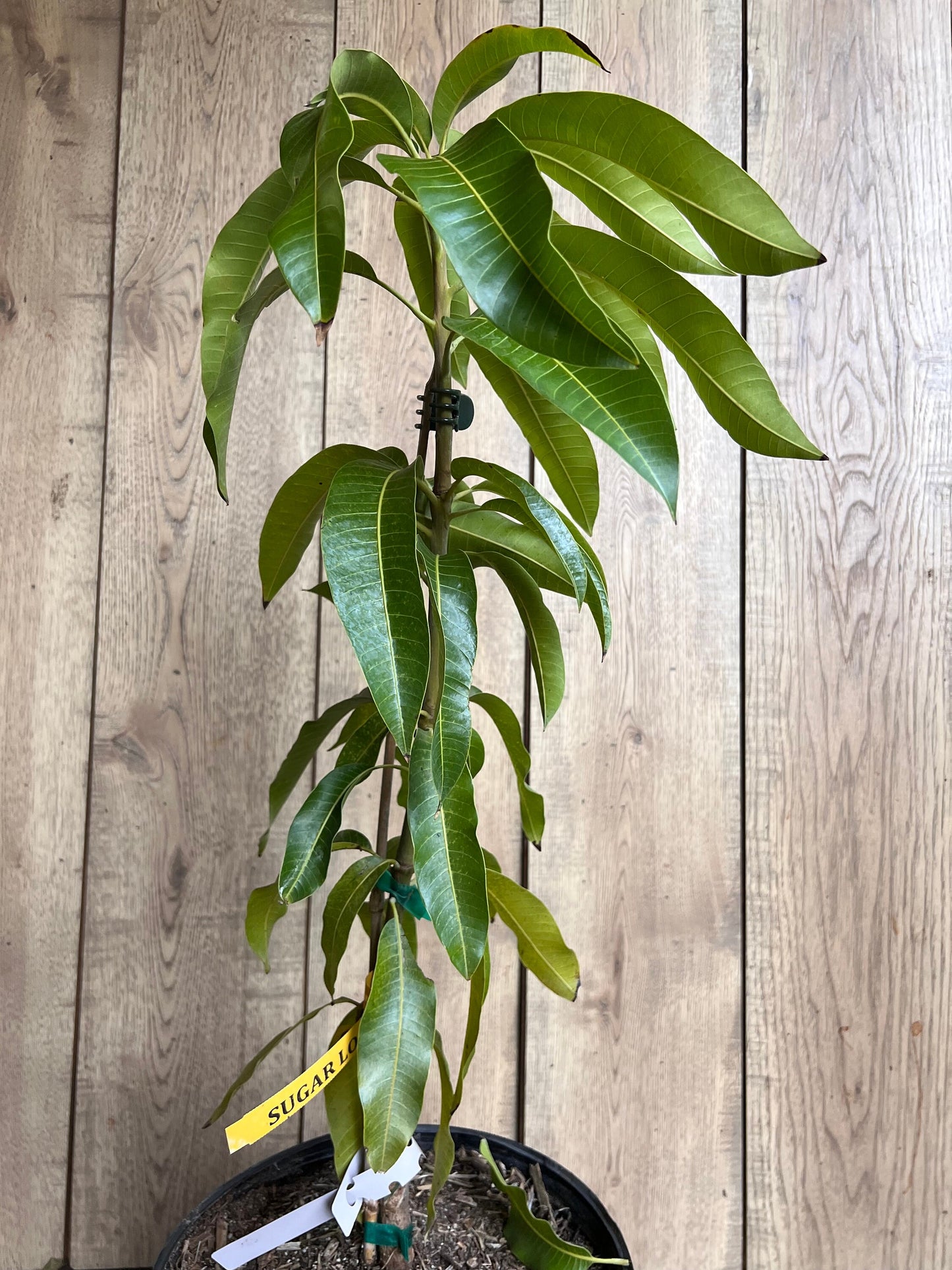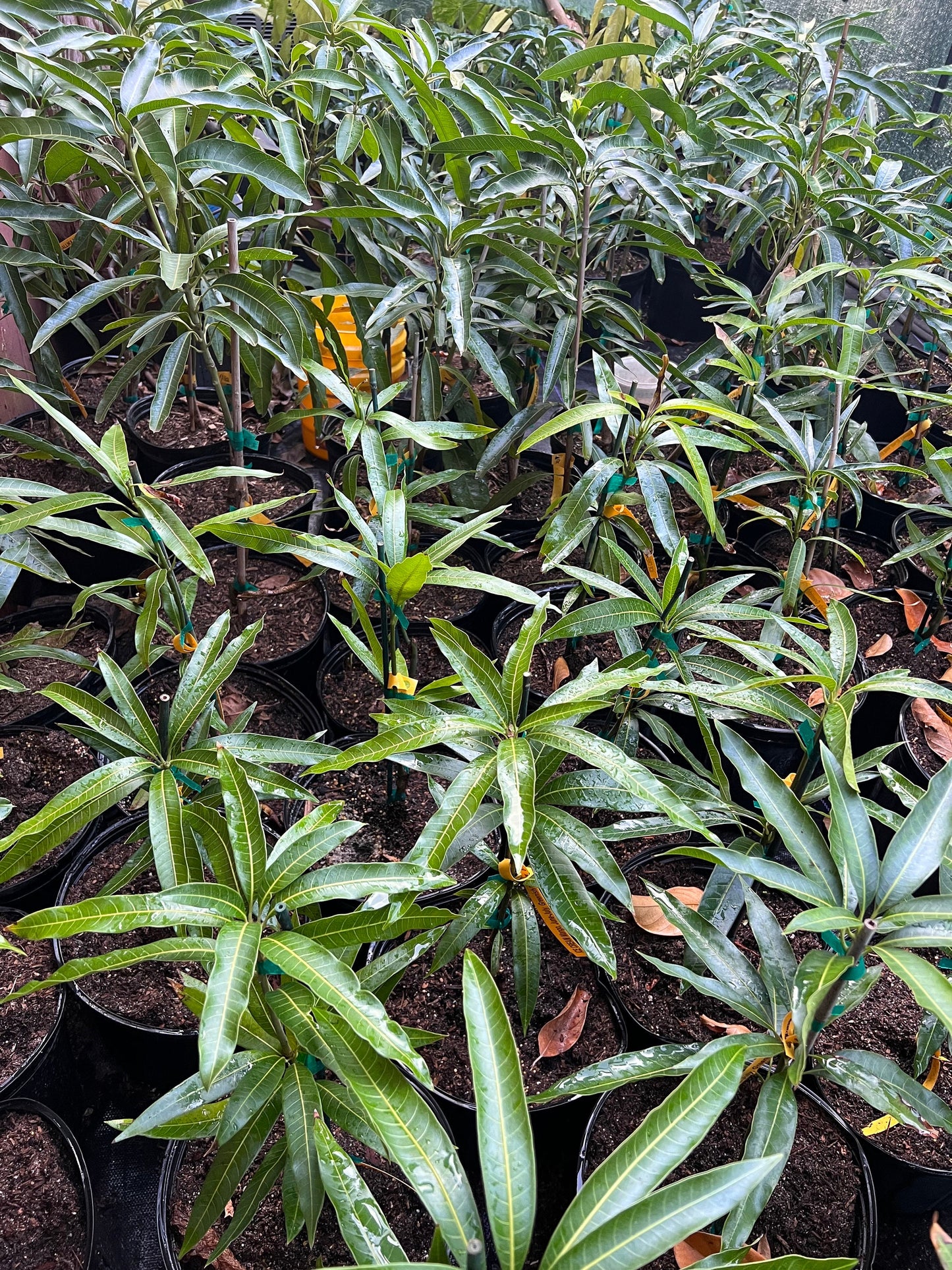Sugar Loaf Mango Tree. grafted in 3 gallons pot, No Ship to CA and HI
Sugar Loaf Mango Tree. grafted in 3 gallons pot, No Ship to CA and HI
Couldn't load pickup availability
Note: You will receive Sugar Loaf Mango in 3 Gallons pot similar to the pictures
The Sugar Loaf Mango is a unique and prized variety of mango known for its sweet, rich flavor and smooth, buttery texture. Originating in the Caribbean, this mango is smaller and more elongated than typical varieties, with a distinctive shape resembling a sugar loaf. Its skin is a vibrant golden yellow when ripe, and the flesh inside is fiberless, offering a juicy, succulent taste that is often described as a perfect balance of sweetness and subtle tang. Highly sought after for its exceptional quality, the Sugar Loaf Mango is a favorite in tropical fruit markets, prized for both its flavor and its limited availability during mango season
Care:
-
Climate: Sugar Loaf Mangoes thrive in warm, tropical or subtropical climates. They need plenty of sunlight (at least 6-8 hours per day) and are sensitive to frost, so they're best grown in USDA hardiness zones 10-11.
-
Soil: They prefer well-draining, sandy loam or loamy soil. Ensure the soil has a slightly acidic to neutral pH (5.5 to 7.5). Mango trees are prone to root rot in waterlogged soil, so good drainage is crucial.
-
Watering: While mango trees are drought-tolerant once established, young trees need regular watering, especially during dry periods. Water deeply but infrequently, allowing the soil to dry out between waterings to prevent root rot.
-
Fertilizing: During the growing season, feed your tree with a balanced, slow-release fertilizer that is rich in micronutrients like zinc, iron, and manganese. Fertilize about 2-3 times a year, but avoid over-fertilizing, which can cause excessive vegetative growth at the expense of fruiting.
-
Pruning: Prune the tree to maintain a strong structure and remove any dead or diseased branches. Pruning should be done during the dry season, typically after the fruiting cycle, to avoid disrupting flowering.
-
Pest and Disease Control: While mango trees are generally resistant to pests, keep an eye out for common issues like aphids, mealybugs, and scale. Fungal diseases, such as powdery mildew, can also affect the tree, especially in humid conditions. Regularly inspect the tree and treat with organic or chemical options as necessary.
-
Harvesting: Sugar Loaf Mangoes typically mature in the late summer to early fall, depending on the growing region. Harvest the fruit when it reaches full color and yields slightly to gentle pressure, but before it softens too much on the tree. Allow the fruit to ripen fully off the tree for best flavor and texture.
By providing the right conditions and care, a Sugar Loaf Mango tree can thrive and produce delicious fruit for many years.
Share
